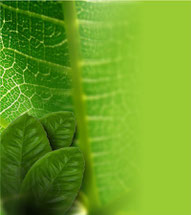Theme III.b: Micromorphological characteristics of plant drugs (vegetal drugs, herbal drugs)

Secretory and excretory tissues
Secretory tissue. Definition and characteristics. Internal secretory tissue: lysigenous cavity, schizogenous cavity and laticifers. External secretory tissue.
These tissues are composed of cells that
develop, storage and eliminate substances the plant doesn’t use in
its vital functions. These substances may be metabolic products or
residues, among them are lipids, alkaloids, tannin, starchs, ketones derivatives, fatty acids and other active ingredients.
These substances are not always expelled by the cells in the same way,
this is why there is:
A internalsecretory tissue and A externalsecretory tissue.
Internal secretory tissue (secretion)
It is responsible for pouring these substances into ducts or cavities that are inside the plant.
These cavities storage of substances resulting from the metabolism are: lysigenous cavity, schizogenous cavity and laticifers cavity
Lysigenous cavity
Are formed by cavities coming from cells groups which are loaded of secretory products and whose protoplasm membranes have been destroyed gradually.
This group of cells is also called "pockets" of secretion and can be found in fruits and young stems of citrus.
Schizogenous cavity
Are the cells or epithelial located inside the parenchyma tissue or inside other tissues. They always wrap rounded or irregular intercellular spaces, or intercellular ducts, simple or branched, which sometimes go through all the plant as communications ducts.
These intercellular spaces are caused by separation of the glandular cells and are the containers of the developed products, they are the schizogenous cavities or secretion cavities.
According to its contents, are distinguished ducts or cavities with lipids (essential oils), resins, gums and mucilages.
Laticifers cavity
They originate from the seed´s embryo. They are living cells with cytoplasm and cell membrane and grow indefinitely. The cells that surround them leave in these vessels the metabolic waste substances.
This mixture storage, generally milky white, other colors rarely, form an emulsion which are active ingredients as protein, carbohydrates, enzymes, tannins, rubber, hormones and alkaloids and is called latex.
A plant rich in latex is the papaya.
External secretory tissues (excretion)
Is responsible for the metabolism´s residues dump. Among these residues are the end products of metabolism: oxygen, carbon dioxide and water steam.
The tissues involved in the release of these gases to the atmosphere are considered broadly as excretory tissues, among them are the spongy parenchyma of green leaves and the green primary cortical parenchyma.
These tissues are in communication with the open air through numerous stomata and lenticels.
Excretory cells and tissues are presented in different tissues, both primary and secondary.
Other residues, such as essences and resins, are expelled through the glandular hairs. Depending on the nature of the excreted, will be the type of glandular hair.
see also

 Pharmacognosy´s topics - Medicinal plants
Pharmacognosy´s topics - Medicinal plants


Write a comment